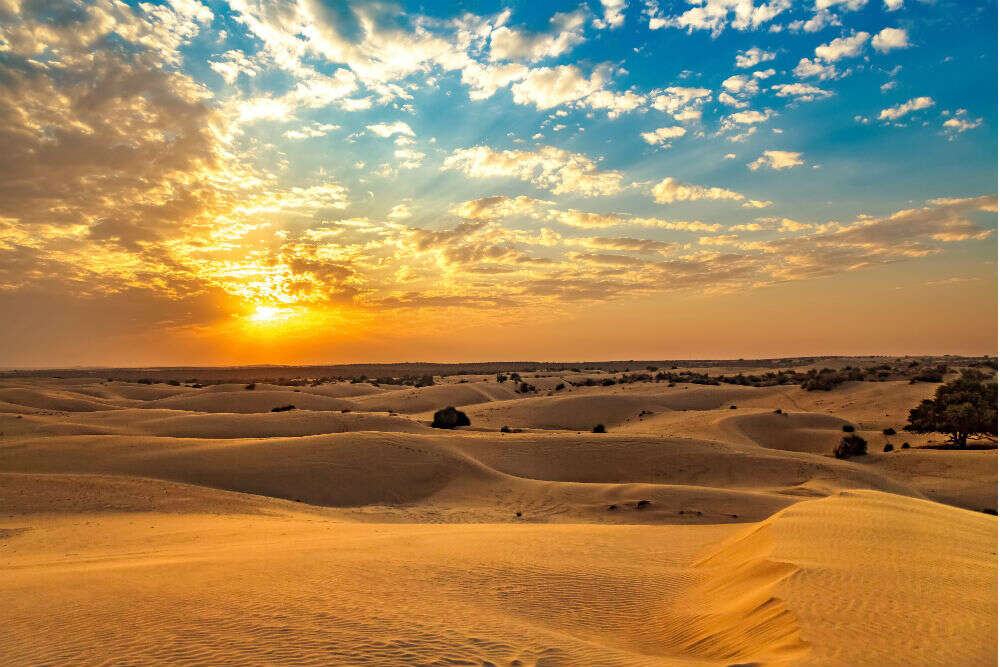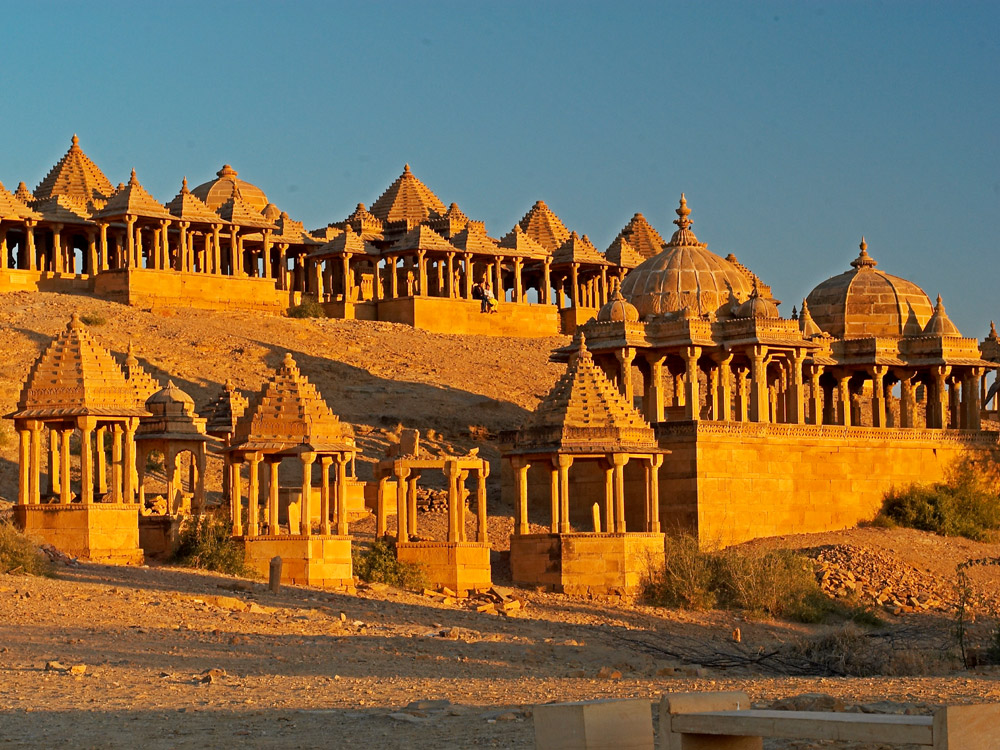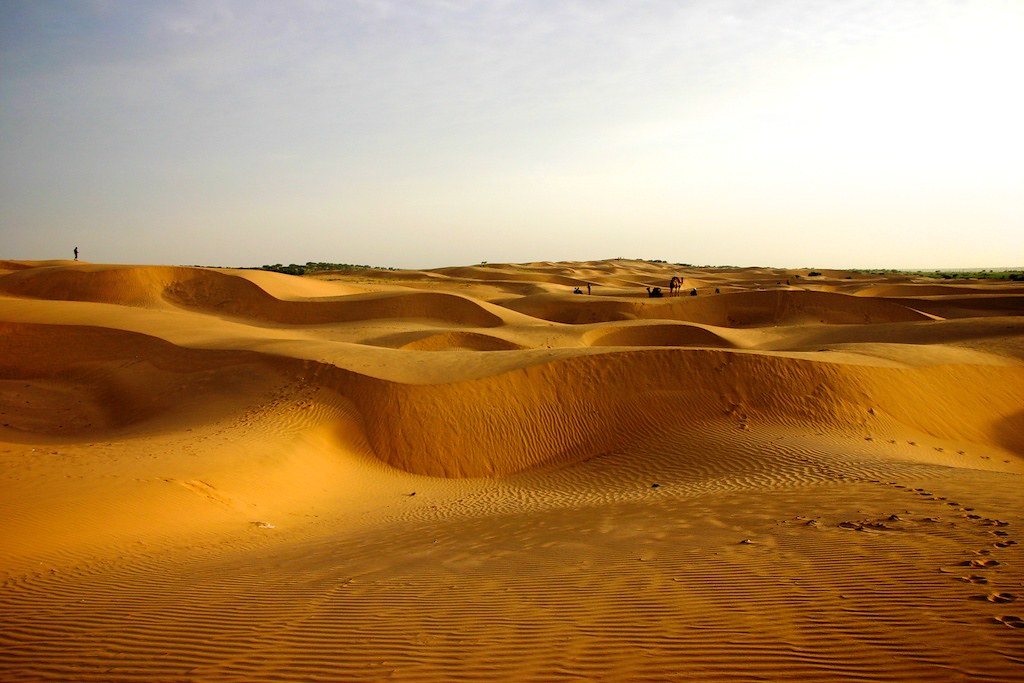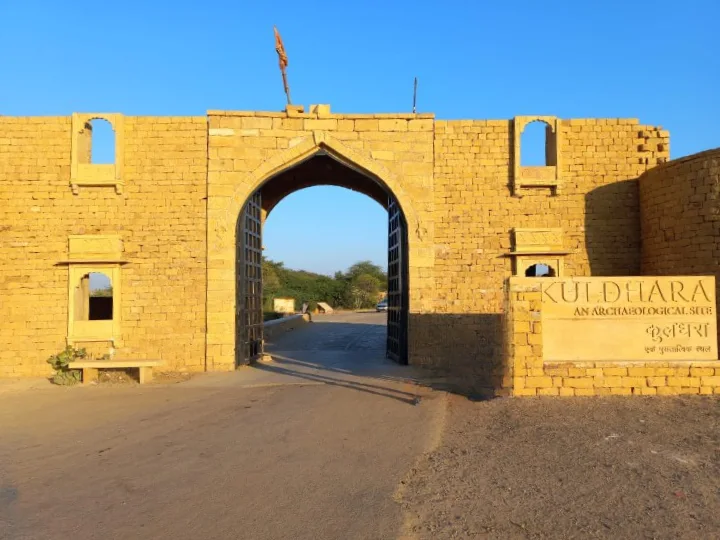Explore the Mysteries of Thar Desert - Hidden Secret
Explore the Mysteries of Thar Desert
The Thar Desert, a realm of captivating intrigue, harbors mysteries beneath its golden sands. The ghost town of Kuldhara, abandoned overnight, whispers tales of an unexplained exodus, casting an eerie aura. The ever-shifting sand dunes add an enigmatic touch, creating illusions and mirages that challenge even the most seasoned traveler. Amidst the arid vastness, ancient villages and hidden oases preserve traditions and cultural secrets, inviting exploration into a timeless tapestry. The Thar Desert beckons adventurers to unravel its secrets, offering a mystical journey through abandoned ruins, elusive landscapes, and the captivating stories woven into its very fabric.
About the Thar Desert
Thar Desert is huge, covering over 200,000 sq km. It therefore deserves its grandeur name, the Great Indian Desert, particularly as most of Thar Desert is in India (15 per cent is in Pakistan). More than 60 per cent of that lies within Rajasthan. A dry state indeed.
Not only that, it’s a harsh place to live. Temperatures range from extremes of near freezing in the colder months to more than 50ºC in summer about the Thar Desert. Swift winds and blinding sandstorms follow summer, before a short rainy period at the tail end of the monsoons (around July, August, September).
Most of that rain runs right through the soft, sandy soils which are poor fertile ground for vegetation. Only the hardiest of plants and creatures can survive and prosper here. And yet, a surprising number of people, livestock and wild creatures live in the area. In fact, despite this desert being so harsh, around 40% of the total population of Rajasthan lives in the Thar Desert, that’s 83 people per sq km. Believe it or not, it’s actually one of the most heavily populated desert areas in the world.
How old is Thar Desert?
The Thar Desert, one of the world's oldest and most arid landscapes, traces its geological origins back millions of years. Formed during the Tertiary period, approximately 65 million years ago, the desert evolved through the gradual transformation of ancient river channels and the uplifting of the Aravalli Range. Over millennia, the region underwent climatic shifts, turning it into the arid expanse it is today. The Thar Desert's age is embedded in the layers of its dunes and the resilience of its ecosystems, each grain of sand a witness to the passage of time. Rich in geological history, the desert has witnessed the rise and fall of civilizations, leaving behind a legacy of ancient traditions and a unique environment that continues to stand as a testament to the enduring forces of nature.
How the Thar Desert is formed?
The Thar Desert was formed as a result of strong winds lifting sand and build-up particles from alluvial sediments and depositing them in the region. Aridity gradually led to the loss of humidity, and the dunes stabilized, soil formed, and vegetation took now shape. The region thus slowly turned it into a desert. Deserts are also formed as a result of high pressure zones, continentality, coastal cooling, and rain shadow areas. The Thar Desert is formed due to the amount of rain falling from east to west, the Arabian Sea branch of the southwest monsoon blowing through Gujarat's Kathiawar area and escaping to the northwest, and the region's high temperatures improving the water retention capacity of the winds and diminishing the likelihood of rainfall.
World's Largest Geoglyphs Found in India's Thar Desert
The Thar Desert, or the Great Indian Desert, is a part of India’s national heritage, located in the western state of Rajasthan, spread over a whopping 77,220 square miles (200,000 square kilometers). Two independent researchers from France conducted a meticulous survey of the desert using Google Earth and drones leading to the identification of 8 Thar Desert geoglyph sites in the Jaisalmer district. The clear-cut geometrical lines and arranged motifs of the Thar Desert geoglyphs are now the largest ever graphical depictions by humans in the world!
"So far, these geoglyphs, the largest discovered worldwide and for the first time in the Indian subcontinent, are also unique as regards their enigmatic signs,” Carlo and Yohann Oetheimer write in their study published in the journal Archaeological Research in Asia. The previous record was held by “The Marree Man” in Australia, which is 4,200 meters (2.6 miles) long, but the discovery in the Thar Desert covers an area of 100,000 square meters, easily surpassing all prior records.
Mysteries of Wildlife in Thar Desert
Being home to rare species of flora and fauna, the Thar Desert in Rajasthan has not been entirely explored with the curiosity that it deserves. The Thar Desert, though seemingly inhospitable, hosts a diverse array of wildlife adapted to its arid conditions. Among the prominent inhabitants are the Indian gazelle, or chinkara, known for its ability to survive on scarce water sources. The elusive desert fox and the Indian wolf navigate the dunes, while the reptilian residents include the spiny-tailed lizard and the saw-scaled viper. Birdlife thrives with species like the Great Indian Bustard and the Demoiselle Crane making the desert their seasonal home. The rare and endangered Indian wild ass, or khur, finds sanctuary in the vast salt flats of the Rann of Kutch, a unique ecosystem within the Thar. Despite the challenging environment, the Thar Desert's wildlife exemplifies adaptation, resilience, and the delicate balance that exists in this seemingly harsh yet ecologically rich landscape.
The Paliwal Brahmins established Kuldhara as a thriving community in the 13th century, beginning its history. The village’s strategically placed proximity to abundant water sources and fertile land allowed for the flourishing of agriculture and commerce. Kuldhara developed into a prosperous and self-sufficient community over time, renowned for its intelligent and skilled artisans.
However, the village was abruptly abandoned overnight in the 19th century. It is believed that the arrival of a cruel and oppressive ruler who demanded the hand of a young girl from the village in marriage is connected to the abandonment. The exact reason for the abandonment remains a mystery. Legend has it that after her father refused, the Paliwal Brahmin villagers of Kuldhara, who were primarily Paliwal Brahmins, cursed the village before they left. It was believed that the curse had caused the village to remain abandoned, haunted, and never again inhabited.
Kuldhara has remained well-preserved and is now a popular tourist destination despite its eerie reputation. The old houses, streets, and community structures, as well as several temples and other historical sites, can still be seen by visitors. Kuldhara is still an important part of Rajasthan’s rich cultural heritage, and visitors and residents alike are still captivated by the mystery surrounding the abandoned village.






Comments
Post a Comment